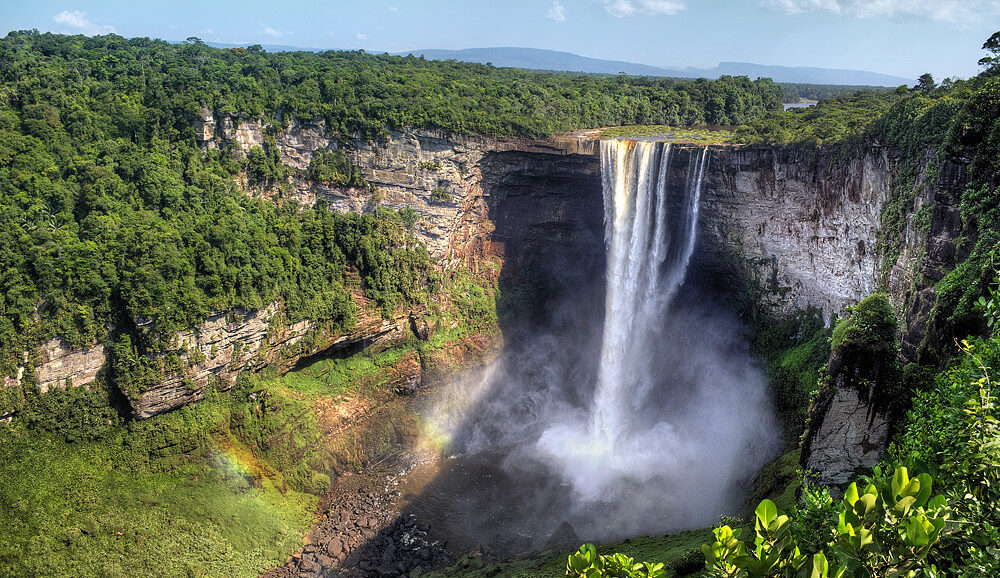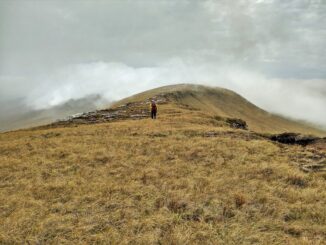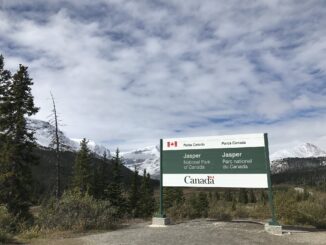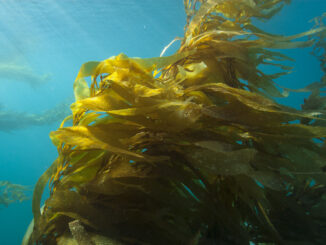
One of world’s most biodiverse national parks finds itself in the middle of a simmering and increasingly dangerous territorial dispute between Guyana and Venezuela.
The park is also a central pillar of Guyana’s plans to dramatically increase the amount of territory under formal protections and showcase its efforts to tackle climate change.
Guyana’s government wants to more than triple the size of protected area, such as Kaieteur National Park and others, constituting its National Protected Areas System (NPAS) “to conserve vulnerable species, like the greater than 100 vertebrates that occur in no other country on Earth” as the government says in a recently adopted Low Carbon Development Strategy 2030 strategic paper.
“Expanding the NPAS will also help Guyana meet global biodiversity targets while showcasing the country’s success to date in preserving the country’s globally important forests,” the government says.
Guyana also considers its protected forest area to be a potent carbon sink and potential source of tradeable emission reduction credits. The Low Carbon Development Strategy 2030 paper says that some 8.4% of the nation’s land area is set aside for protections.
Kaieteur National Park is now at the center of Guyana’s territorial dispute with neighboring Venezuela.
A United States Department of Defense official, Deputy Assistant Secretary of Defense Daniel Erickson, traveled south to Guyana this week to visit the region of the border between Guyana and Venezuela. It marks the most recent effort by Washington to demonstrate that it will likely mobilize in Guyana’s defense should Venezuela invade the region. Caracas threatened to do so late last year.
Venezuela has long laid claim to nearly two-thirds of the territory controlled by the government of Guyana, the only country in South America that uses English as an official language. Venezuela’s government holds that the border between its territory and Guyana should be at the Essequibo River.
The Essequibo region, a vast stretch between the river and the current internationally recognized border between Venezuela and Guyana, contains a vast area of rainforest and savanna and is known to harbor large deposits of offshore crude oil. The region is also home to Kaieteur National Park, located almost right in the middle of the disputed area.
A war over where the border truly lies may not only threaten the peace and safety of the scattered communities in Essequibo, but also the biodiversity and sensitive ecosystem in Kaieteur. Among other vulnerable species, the park is home to endangered species of giant anteaters and South America’s largest species of butterfly.
Though tiny compared to more famous national parks at 630 square kilometers (242 square miles), Kaieteur National Park could be in for a major expansion.
Though today about 8 percent of Guyana’s land territory is considered protected in the form of parks or preserves, Georgetown has committed itself to dramatically expanding this figure to 30 percent by 2030.
The government says it’s compelled to embark on this massive expansion of protected area, both at Kaieteur and elsewhere in the country, by international environmental negotiations, in particular negotiations among parties to the United Nations Convention on Biodiversity.
“Guyana is committed to expanding the protected areas, initially to 17 percent and progressively to 30 percent by 2030, comprising of terrestrial and marine protection, framed by international biodiversity targets like the Aichi Biodiversity Targets and the Leaders Pledge for Nature,” the LCDS authors wrote.
Guyana has not been known as a major tourist destination, but that’s changing.
The COVID-19 pandemic dealt a severe blow to Guyana’s tourism sector, but prior to the global shutdowns visitations to Guyana grew from 152,000 in 2010 to more than 315,000 in 2019 according to Statista. Guyana’s population is a little over 800,000 according to the World Bank.
Tourism to Guyana has since been expanding again post-pandemic, especially since British Airways announced twice-weekly flights from London to Georgetown beginning in March 2023. The country is still largely off the global tourism radar, even though it’s home to a massive waterfall that’s often compared to Niagara Falls. That waterfall, Kaieteur Falls, happens to be this remote national park’s namesake.
Kaieteur Falls is “considered to be one of the highest single drop waterfalls in the world,” says Adventure Guianas, a travel company, in its promotional materials. And the massive thundering waterfall isn’t the only attraction drawing thrill seekers to this remote and sparsely populated region, the company says.. “The rich biodiversity, some of which are endemic to Kaieteur National Park, ensures a highly educational, adventurous and challenging experience while traversing through its pristine Amazonian rainforest.”
The Global Alliance of National Parks says Kaieteur Falls is indeed the world’s largest single waterfall “based on the volume of water.”
Protected and expanding Kaieteur is critically important for preserving biodiversity and the world’s natural heritage, the Alliance insists.
“The dense jungle of the Amazonian rainforest along with the waterways of the park creates an astounding habitat for amazing wildlife,” the group said. “Some of the favored species visitors hope to see include the jaguar and giant otter. South America’s largest butterfly call the park home and the golden rocket frog is endemic to Kaieteur.”
Late last year, the leaders of Venezuela and Guyana agreed that both sides would refrain from threatening force in their territorial dispute, but the government leaders failed to put an end to the tense standoff.
©2025 Public Parks
Park Info
Park Name:
Kaieteur National Park
Location:
Guyana
More information:



